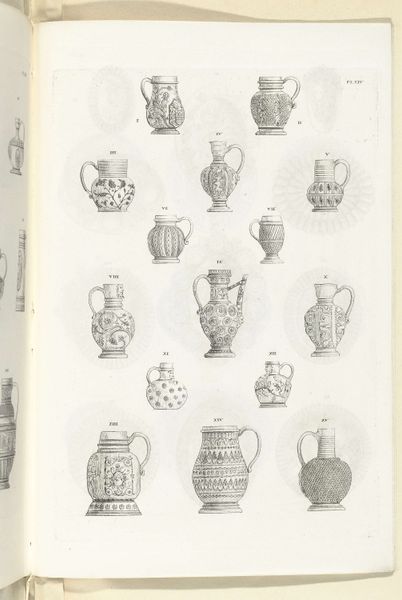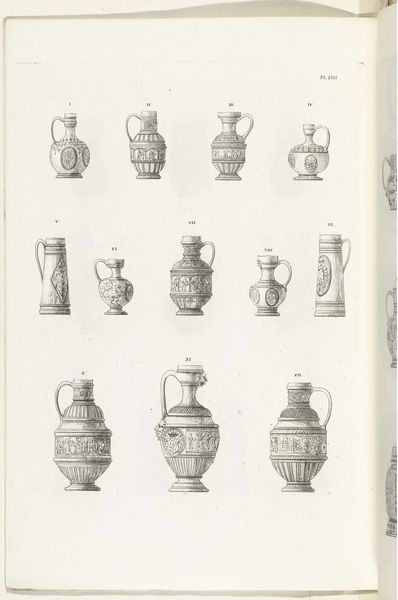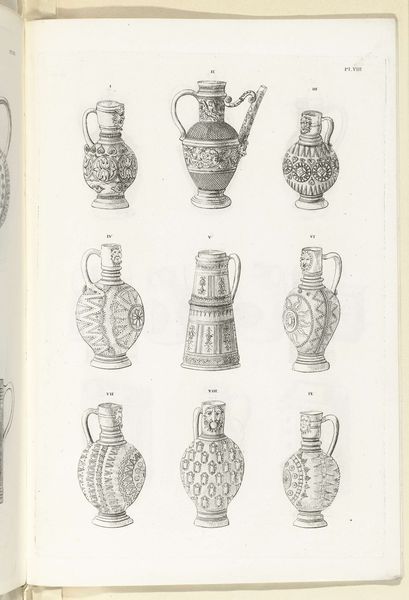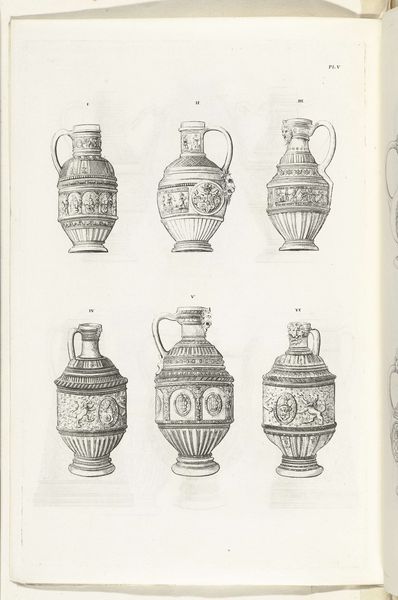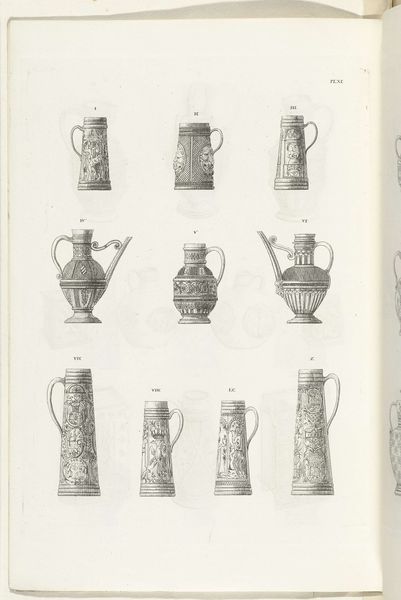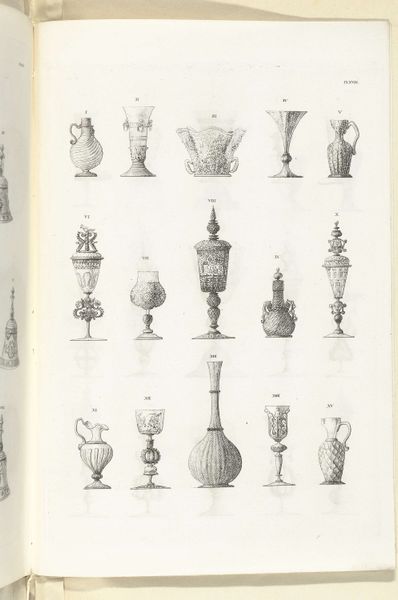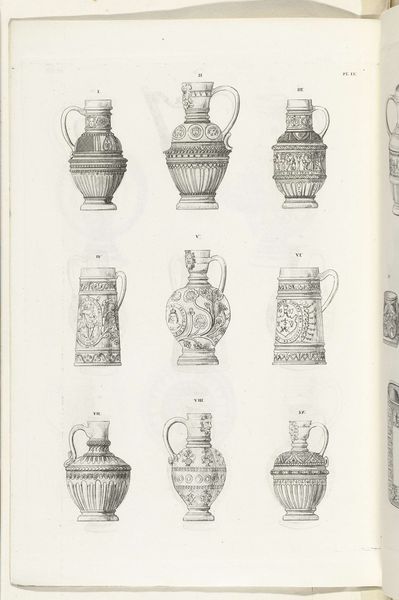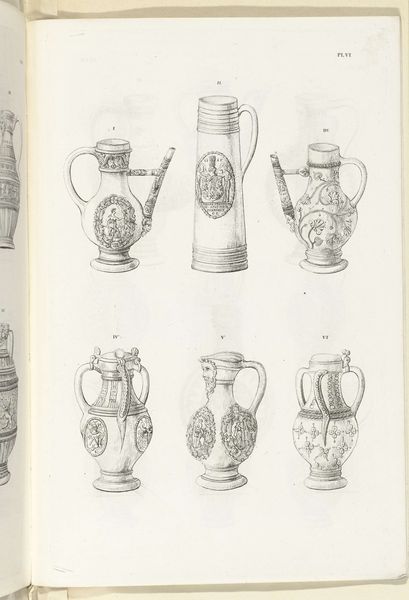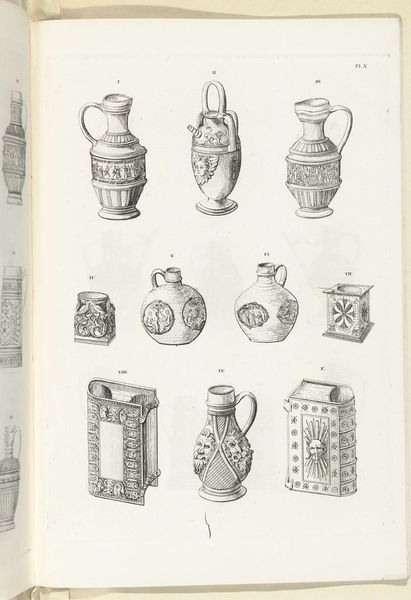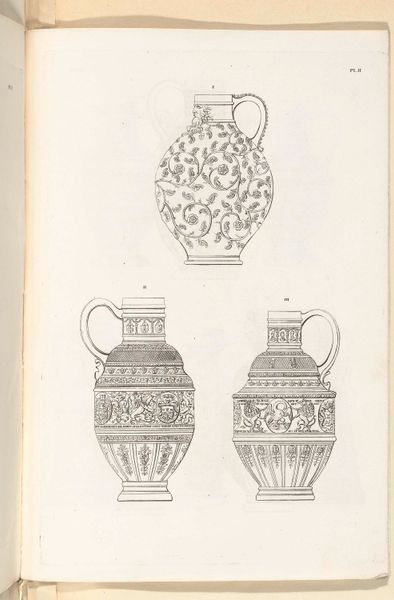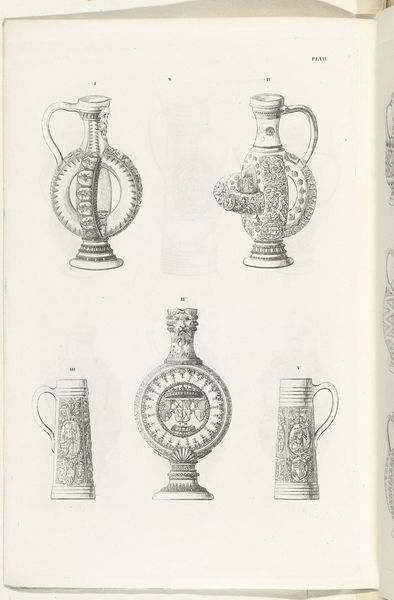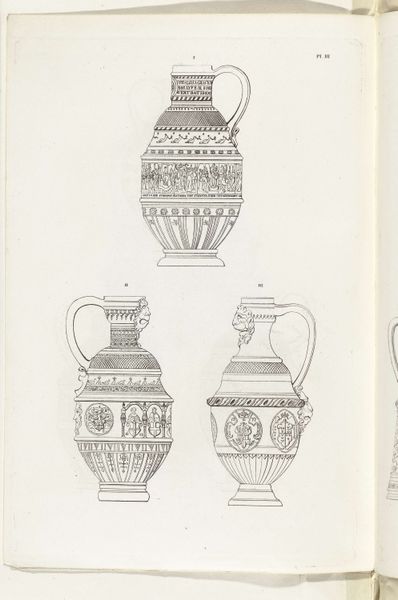
drawing, graphic-art, print, ink
#
drawing
#
graphic-art
# print
#
ink
#
geometric
Dimensions: height 200 mm, width 158 mm
Copyright: Rijks Museum: Open Domain
Editor: This print, titled *Kannen van steengoed, plaat XII,* made by Charles Onghena between 1827 and 1829, showcases a collection of stoneware jugs rendered in ink. The sheer variety of forms is striking. What social and political narratives do you think these everyday objects represent? Curator: The industrial revolution was deeply entrenched, with shifting class structures; it begs the question of who had access to such ornate stoneware. Were these items truly utilitarian for all social strata, or did the upper class drive an emerging aesthetic that reflected both newfound industrial prowess alongside traditional artisanship? How do you see the repeating geometric and organic motifs functioning in this context? Editor: I notice how the jugs appear both similar and distinct – like a series of variations on a theme. The geometry reminds me of pattern design meant for textile printing. Curator: Precisely. The period witnessed rising nationalist sentiments alongside imperialism. Does this interplay of mass production, the desire for uniformity, and individual expression, speak to emerging national or cultural identities through domestic items like these? It almost feels like these are the blueprints or prototypes for something more expansive. Editor: That’s a compelling thought! Considering them as blueprints recontextualizes them within the period’s fervor for industry and nation building. This shifts them from just jugs to objects that mirror that period's desires. Curator: Right! We must interrogate whose culture and identity these objects privileged. Weren't many nations imposing westernized consumer objects globally, often to the detriment of native art and production. Do the shapes themselves emulate the vessels of a certain ruling class perhaps? Thinking this way opens many avenues for understanding not just this art piece, but the period's cultural dynamics, broadly. Editor: I never thought of everyday objects in a social framework. Thank you! Curator: And thank you, for connecting textile prints and jugs: it highlights the era's visual and industrial landscape.
Comments
No comments
Be the first to comment and join the conversation on the ultimate creative platform.
